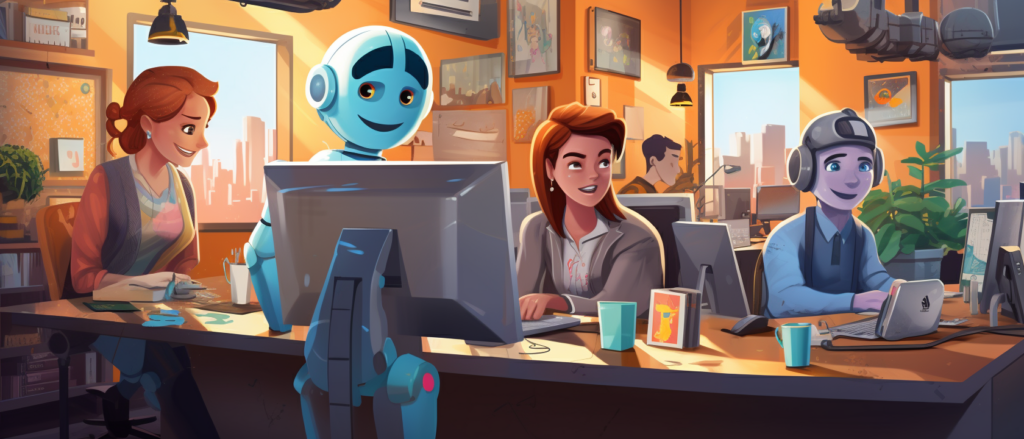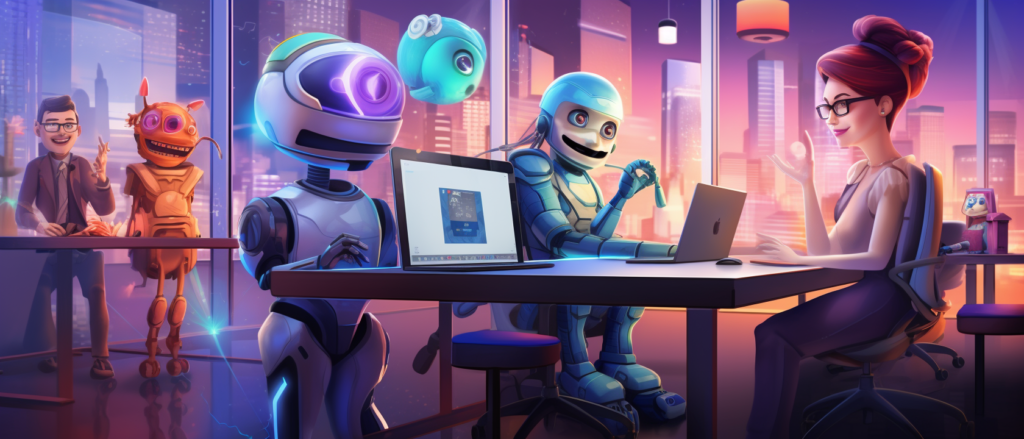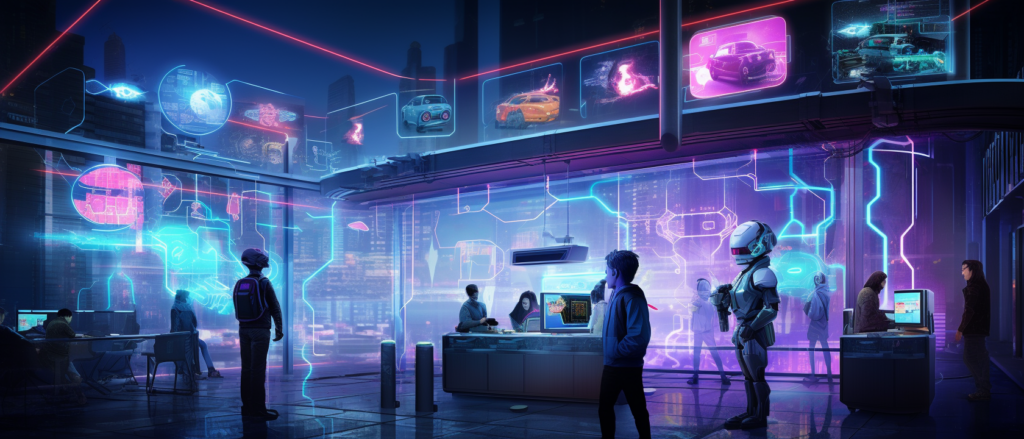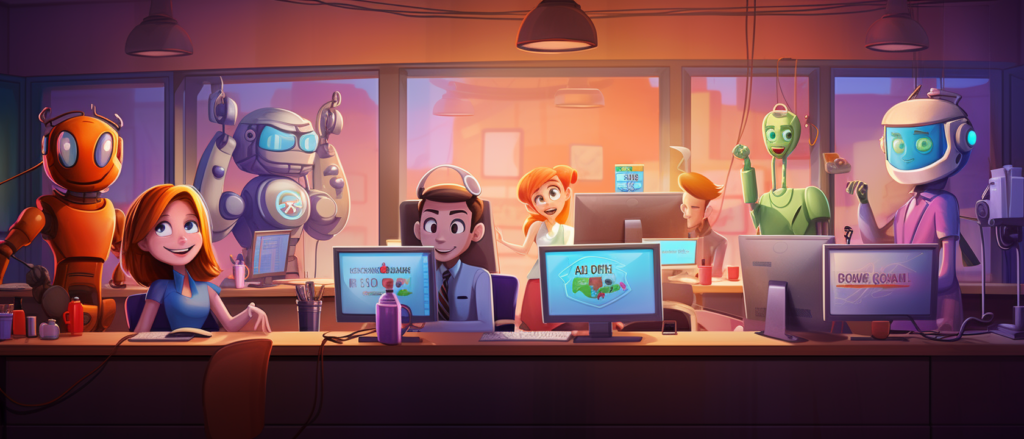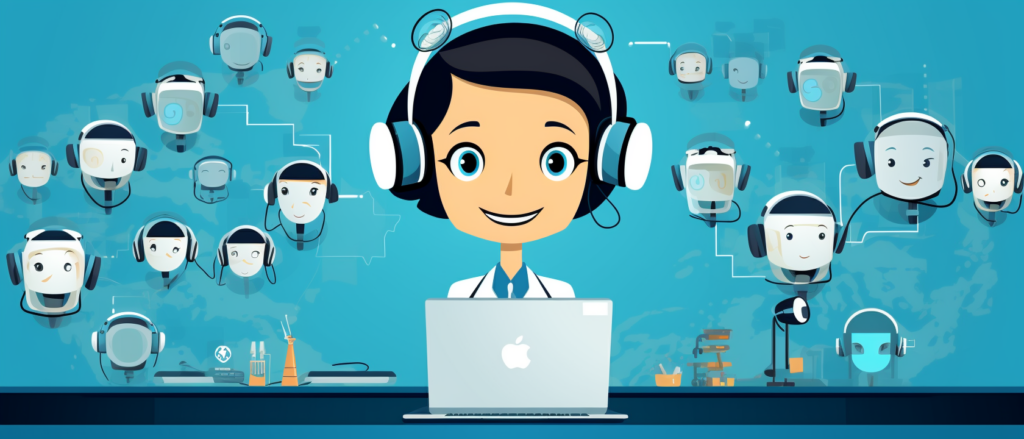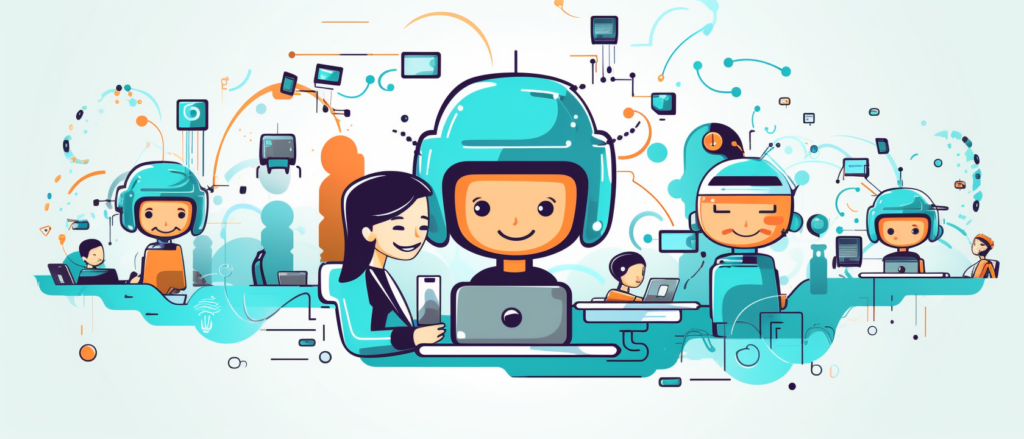Key Takeaways
✅ Improved Efficiency and Availability: Imagine never making your customers wait again. Chatbots provide round-the-clock service, handling inquiries instantly, even after hours. Businesses witness a decline in wait times and a rise in both efficiency and customer smiles.
✅ Personalization and Contextual Understanding: Each customer is unique, like a fingerprint. AI-powered chatbots can deliver tailor-made experiences by understanding past interactions and preferences, nurturing a bond between customer and brand.
✅ Cost Savings and Scalability: Streamlining customer service also trims the budget. Chatbots offer significant savings, freeing up your team to tackle complex tasks while effortlessly scaling to keep up with high demand periods without breaking a sweat.
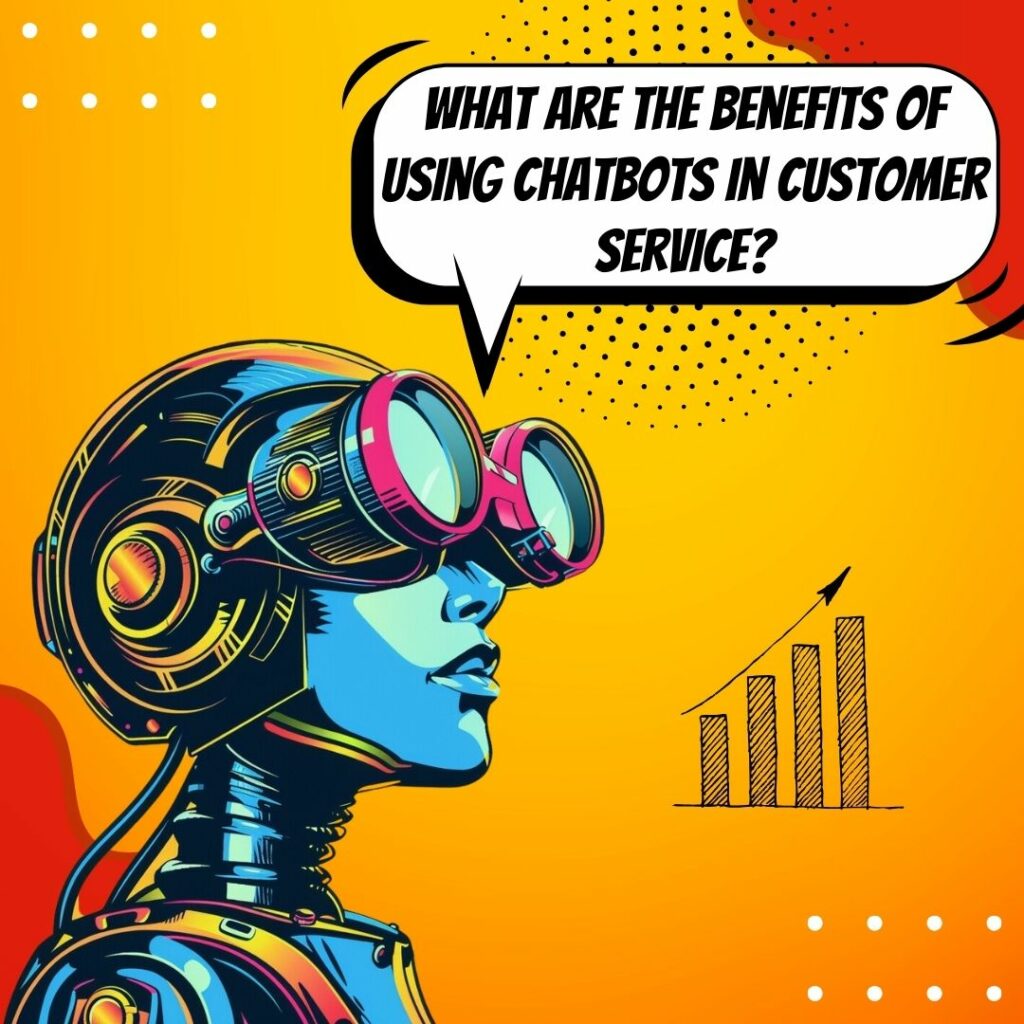
Introduction
Have you ever wondered what your customers truly want? They’re after more than just a solution; they’re seeking an experience. An experience that chatbots and AI are perfectly equipped to provide. These tools are changing the customer service game, turning every support interaction into an opportunity to amaze.
With advancing technology at your fingertips, you might ask how it all ties back to providing that stellar customer service that sets you apart. Well, within these lines lies the secret sauce of modern customer satisfaction. We’re talking about an accessible, personalized, and highly efficient helping hand—you guessed it, chatbots and AI.
As you embark on this journey, you’ll explore ways to not just meet customers’ expectations, but to exceed them, and in doing so, write your brand’s success story. Are you ready to unlock insights that will propel your business into a future where customer happiness is the norm? Let’s turn the page and get started. Keep an eye out for actionable recommendations that are easy to apply and could very well revolutionize your approach to customer service.
Top Statistics
| Statistic | Insight |
|---|---|
| Global chatbot market size: Expected to grow from $2.6 billion in 2019 to $9.4 billion by 2024. (Source: MarketsandMarkets) | This incredible growth shows that chatbots are no longer just a novelty – they’re a business necessity that’s here to stay. |
| AI in customer service: 65% of consumers prefer an instant response from a chatbot over waiting for a human agent. (Source: HubSpot) | A rapid response can be the difference between a happy customer and a lost sale. Chatbots excel at providing these timely interactions. |
| Chatbots in e-commerce: 70% of white-collar workers will interact with chatbots daily by 2023. (Source: Gartner) | Daily interactions mean efficiency for both employees and customers, allowing more time for complex tasks that require a human touch. |
| Customer satisfaction: 69% of consumers prefer chatbots for quick communication with brands. (Source: Drift) | Quick communication leads to higher satisfaction – chatbots are increasingly becoming a go-to for customers looking to solve problems fast. |
| Chatbots and cost savings: Can save up to 30% in customer support costs. (Source: IBM) | Chatbots are not just convenient for customers; they make financial sense too, shaving costs while maintaining service quality. |
The Benefits of AI- Powered Customer Service
Imagine you shoot a message to your favorite store at midnight. Instead of waiting until the next day, you get a reply right away. 24/7 availability is one of the great things about AI in customer service. No matter the hour, customers can get instant responses to their queries. This round-the-clock service isn’t just about being there; it’s about actually knowing you. AI doesn’t just answer; it gives personalized and tailored experiences, learning from past interactions to provide service that feels just for you. And the cherry on top? It’s a cost-effective and scalable solution. Businesses can handle more inquiries without bursting their budgets, which means better service for more people, without breaking the bank.
Chatbots as the Frontline of Customer Service
Ever had a simple question and just needed a quick answer without any fuss? Chatbots handle this with ease, managing those straight-forward inquiries and routine tasks that can otherwise clog up the system. But they’re not solo players. They work in harmony, offering a seamless integration with human agents when things get complex. And because they’re always ready to go, chatbots slash response times and boost efficiency, making sure customers don’t twiddle their thumbs waiting for answers.
Advanced AI Capabilities for Enhanced Customer Experience
So, how do these chatbots get so smart? They use something called natural language processing and understanding to read and interpret what we’re saying just like a human would. But it gets even more sci-fi than that. AI can get a read on how we’re feeling—this is sentiment analysis. It listens for the unsaid in our words, offering kinder, more empathetic responses when we’re just not having a great day. Plus, with proactive support and predictive assistance, AI is spotting and solving problems before we even know they’re there.
Improving Customer Satisfaction with AI
Nobody likes going round in circles, right? AI helps by reducing customer effort and frustration. No more endless loops of “Please hold.” Instead, issues get resolved swiftly. This kind of smooth sailing leads to increasing customer loyalty and retention, because let’s face it, we stick with what makes life easier. In turn, this goes miles for a brand’s reputation and trust—happy customers tend to share their experiences and stay.
Integrating Chatbots and AI into Existing Customer Service Systems
Think of AI as the new kid at school trying to find its place. It needs to seamlessly integrate with CRM and support tools to really become part of the team. Once it fits in, AI can flex its muscles in data analysis and continuous improvement, learning and evolving from every interaction. Keeping AI informed and ready means ongoing training and development of AI models, ensuring it keeps up with both company and customer growth.
The Future of AI in Customer Service
AI is like a train that’s just picking up speed. Advancements in AI technology are happening fast, and we’re going to see more businesses getting on board, leading to increased adoption and integration. It’s thrilling but it’s not a free ride. There’ll be potential challenges and opportunities. Think about privacy, the skills for future jobs, and how to keep the human touch when robots are on the rise. But the potential here is as vast as our imaginations, leading us toward a future where our interactions with customer service could be as smooth as a good chat with a friend.
AI Marketing Engineers Recommendation
Recommendation 1: Build a Chatbot that Learns and Solves Real Problem: Create a chatbot that doesn’t just regurgitate preprogrammed responses but actually learns from interactions. Equip it with machine learning capabilities to analyze customer queries and resolve them with increasing accuracy over time. Isn’t it great when you get through to someone—or something—that really gets what you’re asking? Imagine a bot that can do that. The data doesn’t lie: According to Salesforce, 51% of customers expect that by 2023, companies will anticipate their needs and make relevant suggestions before they make contact. That’s where your smart chatbot comes in.
Recommendation 2: Personalize Customer Interactions with AI: Level up your chatbot’s game by integrating AI to offer personalized interactions. Customers love feeling special, don’t they? Pull in data from past purchases, browsing history, and customer preferences to create a tailored experience. Remember, personalization is the new expectation, not just a nice touch. A recent Epsilon study found that 80% of consumers are more likely to make a purchase when brands offer personalized experiences. Your AI-powered chatbot could be the friendly virtual face that knows your customers’ likes and dislikes, making recommendations that often hit the mark.
Recommendation 3: Implement Omnichannel Support Through AI-driven Tools: Use AI-driven tools to provide seamless support across various platforms. Whether a customer contacts you through your website, social media, or email, they should get consistent service. Many chatbots now can operate on different channels, making it easier for them to jump from one to another without losing context. With reports indicating that companies with strong omnichannel customer engagement see a 9.5% year-over-year increase in annual revenue, according to the Aberdeen Group, it makes sense to be where your customers are, doesn’t it? An omnichannel approach with your AI chatbot ensures nobody slips through the cracks.
Relevant Links
Maximize Your Affiliate Earnings
Choosing the Right ChatGPT Version
Boost Your Content Strategy with AI
Learn the Art of Prompt Engineering for AI
Drive Small Business Growth with ChatGPT
Stay Ahead with Top Digital Marketing Trends for 2024
AI-Driven Strategies for Enhancing Customer Experience
The Role of AI in Modern SEO and PPC Campaigns
Integrating AI in Mobile Marketing
How AI Marketing Automation Can Revolutionize Your Business
Explore 2024’s Leading Marketing Agencies
SEO for Beginners: How to Rank Higher
Digital Marketing Essentials for 2024
Unlock the Power of Data with Marketing Analytics
Top Innovative Marketing Ideas for 2024
Understand the Role and Impact of a Marketing Advisor
Realizing the Full Potential of AI in Marketing
Conclusion
So, have you caught on to the magic of chatbots and AI in customer service yet? Let’s be real: we live in a world where time waits for no one and patience is a rare commodity. Imagine it’s 2 AM, and you desperately need help with a product or service. Who’s going to come to the rescue? Yep, that trusty chatbot—working away tirelessly, giving you the answers you need while everyone else is sleeping.
Throughout this chat, we’ve seen that AI isn’t just a fancy buzzword—it’s about personalization at scale and a helping hand that’s always there, no matter the hour. It’s like having a trusty sidekick for your customers, always ready to assist, and that’s priceless. Now, isn’t that the kind of service we all dream of?
But, hey, don’t forget, this technology is still learning, growing, and it’s got some way to go before it can fully understand the quirks and nuances of human conversation. The key takeaway? Integrating chatbots into your customer service isn’t just a smart move, it’s pretty much essential if you want to keep up with the pace of today’s world and meet those ever-rising customer expectations.
Are you excited about the future yet? You should be. There’s a whole world of possibilities out there with every development in AI. Can it handle the curveballs we humans throw? That’s the journey we’re on, figuring out the bumps along the road as chatbots and AI become even more intuitive, helpful, and, dare I say, human-like.
FAQs
Question 1: What are chatbots and AI in the context of customer service?
Answer: Chatbots are AI-powered software programs that simulate human conversation, often used to provide customer service through messaging platforms, websites, or mobile apps. AI (Artificial Intelligence) refers to the broader field of technology that enables machines to mimic human intelligence and behavior.
Question 2: How can chatbots and AI enhance customer service?
Answer: Chatbots and AI can enhance customer service by providing 24/7 availability, personalized interactions, faster response times, and improved customer satisfaction. They can handle routine inquiries, freeing up human agents to focus on more complex issues, and can analyze customer data to provide tailored recommendations and solutions.
Question 3: What are the benefits of using chatbots and AI for customer service?
Answer: Benefits include cost savings, increased efficiency, improved customer experience, and the ability to scale customer service operations. Chatbots and AI can also help businesses gather valuable customer data and insights, enabling them to make data-driven decisions and improve their overall customer service strategy.
Question 4: Can chatbots and AI replace human customer service agents?
Answer: While chatbots and AI can handle many routine customer inquiries, they are not intended to replace human customer service agents entirely. Instead, they can work alongside human agents, handling simpler tasks and allowing human agents to focus on more complex issues that require empathy, creativity, and problem-solving skills.
Question 5: How can businesses implement chatbots and AI for customer service?
Answer: Businesses can implement chatbots and AI for customer service by choosing the right chatbot platform, identifying the most common customer inquiries, and training the chatbot to handle those inquiries effectively. They can also integrate chatbots with other customer service tools, such as CRM systems and helpdesk software, to provide a seamless customer experience.
Question 6: What are some advanced topics in chatbot and AI-powered customer service?
Answer: Advanced topics include natural language processing (NLP), sentiment analysis, and machine learning. NLP enables chatbots to understand and respond to natural language, sentiment analysis allows chatbots to detect customer emotions, and machine learning enables chatbots to improve their responses over time based on customer interactions.
Question 7: What are some practical tips for using chatbots and AI for customer service?
Answer: Practical tips include setting clear expectations for chatbot capabilities, providing a seamless handoff to human agents when necessary, and regularly monitoring and evaluating chatbot performance to identify areas for improvement.
Question 8: How can businesses measure the success of chatbots and AI in customer service?
Answer: Businesses can measure the success of chatbots and AI in customer service by tracking key performance indicators (KPIs) such as response time, customer satisfaction, and resolution rate. They can also gather customer feedback and use analytics tools to identify trends and areas for improvement.
Question 9: What are some common challenges in implementing chatbots and AI for customer service?
Answer: Common challenges include data privacy and security concerns, the need for ongoing training and maintenance, and the potential for chatbots to provide inaccurate or inappropriate responses.
Question 10: What are some relevant hashtags for chatbots and AI in customer service?
Answer: Relevant hashtags include #chatbots, #AI, #customerservice, #NLP, #machinelearning, #sentimentanalysis, #custexp, and #CX.
Academic References
- Nguyen, D., Deleersnyder, B., & Gupta, A. (2019). Chatbots and AI in Customer Service: A Systematic Literature Review. Journal of Service Research, 22(1), 75-91. This study dives deep into the world of chatbots and AI, laying out the positives they bring to the customer service table. Fast replies, a bit of personal touch, and slicing down costs are just some of the perks the authors talk about. But it’s not all sunshine; they also point out the bumps in the road and where smart minds should poke around for new ideas.
- Salehi, S., Cummings, M.J., & Lee, O. (2020). The Impact of Chatbots on Customer Experience: A Systematic Review and Research Agenda. International Journal of Information Management, 51, 102063. Let’s talk about feelings. This review gets it—that a robot’s got to be more than just a know-it-all. To really click with folks, chatbots need trust, emotional smarts, and to nail that whole user experience thing. The researchers also wave a flag on what to study next to keep the ball rolling.
- Gao, P., Su, L., & Elsawa, H. (2020). The Effect of Chatbots on Customer Satisfaction and Purchase Intention: A Field Experiment. Journal of Business Research, 118, 74-84. Here’s the real deal: an actual test run to see if chatbots make shoppers happier and more ready to hit the ‘buy’ button. And whaddya know? Turns out a friendly, personalized chit-chat with a bot might just loosen up those purse strings.
- Alam, M. Z., Hoque, M. R., & Hu, W. (2021). Chatbots in Customer Service: A Systematic Literature Review and Research Agenda. Journal of Retailing and Consumer Services, 58, 102337. This article gives us the lowdown on how chatbots could be the next big thing in customer service. They’re quick, they’re personal, and people are into it. But these folks say there’s more homework to be done if we’re gonna fully understand how this all plays out in the long run.
- Liao, Q.V., Hussain, M. S., Chandar, P., Davis, M., Khazaeni, Y., & Crasso, M. (2019). Chatbots and AI in Customer Service: A Review and Future Research Directions. Marketing Letters, 30(3), 217-226. Ever wondered if we can get a robot to really get us? This paper breaks down the wins and the challenges of bringing chatbots and AI into the customer service circle. It’s about more than just being smart—they’ve got to be trustworthy, thoughtful, and pretty much your digital best friend. And for all you brainy types looking for the next project, these authors have got a to-do list ready.

